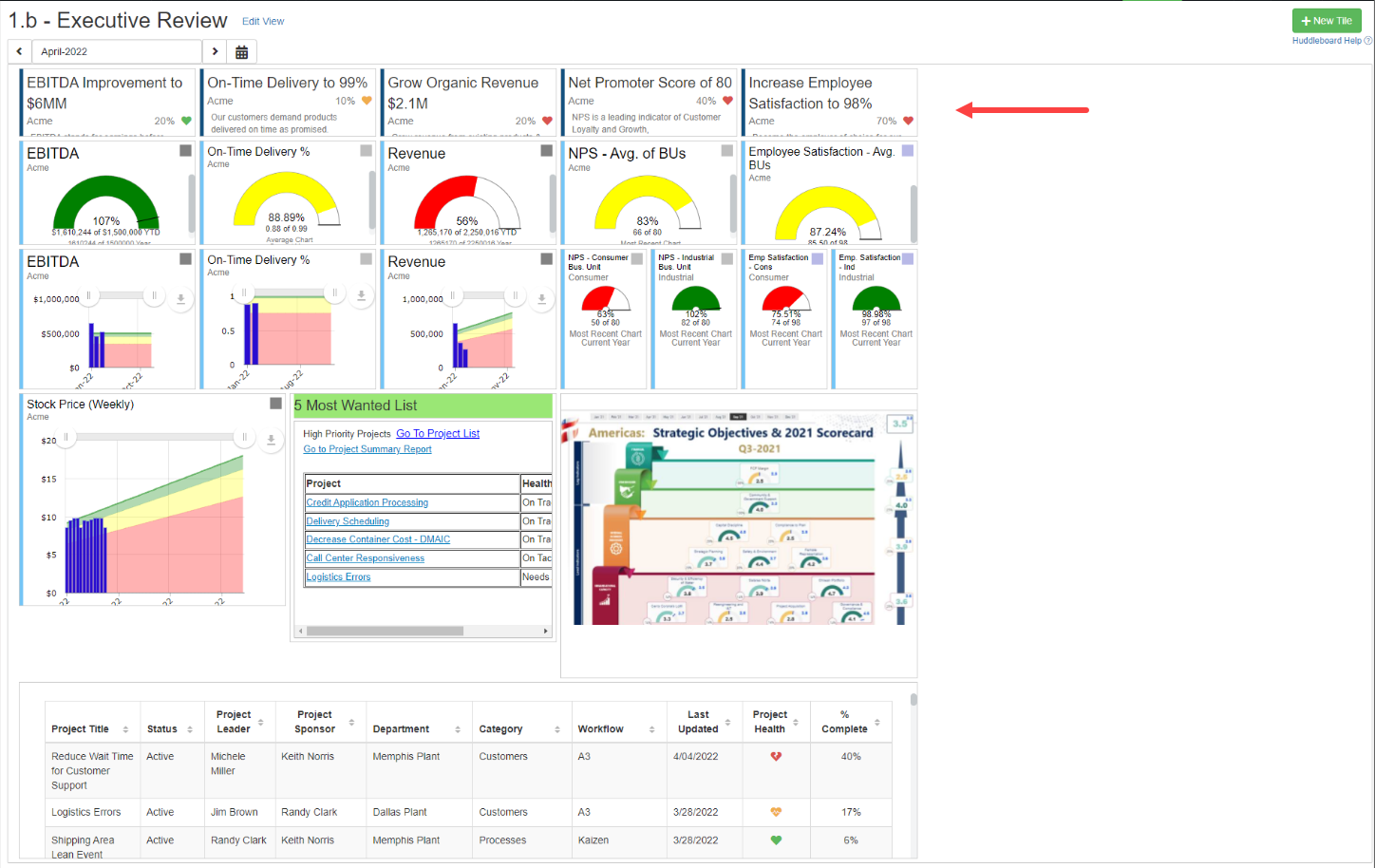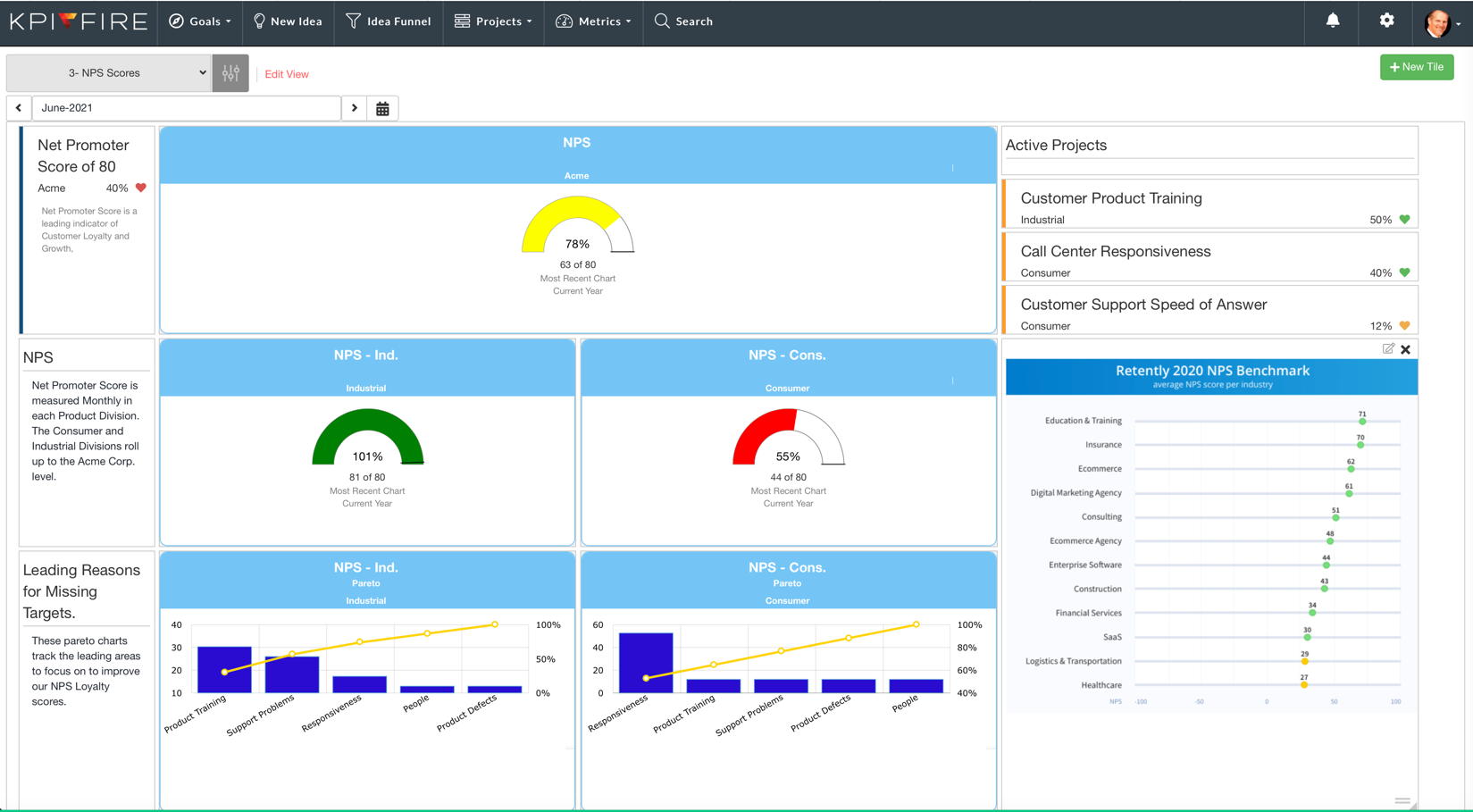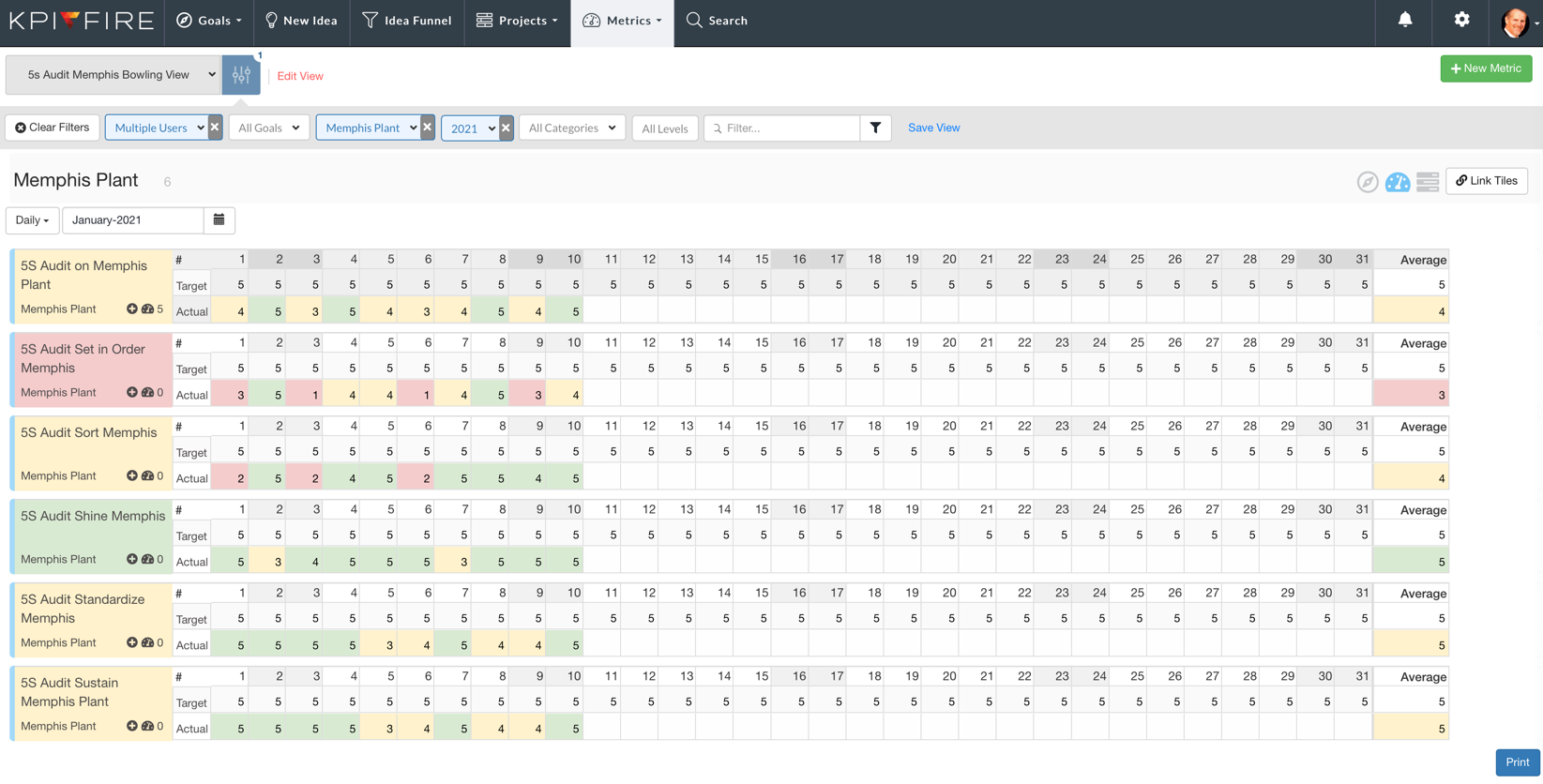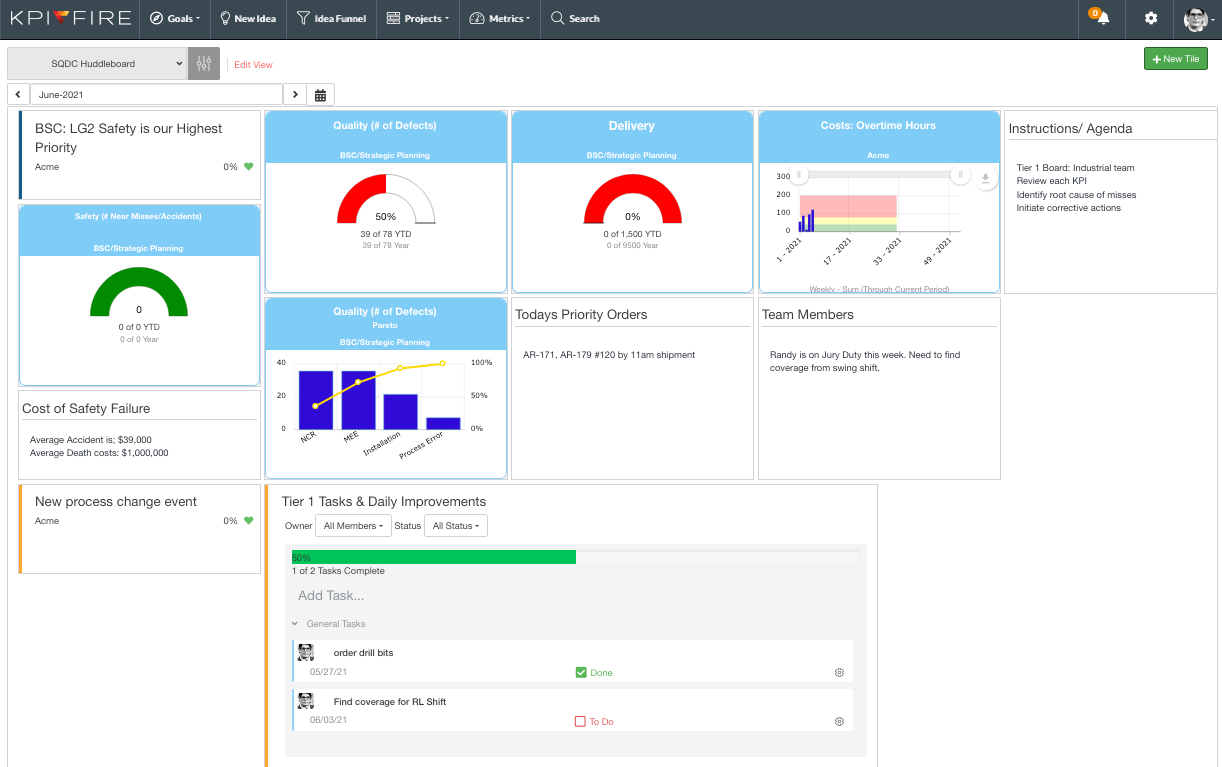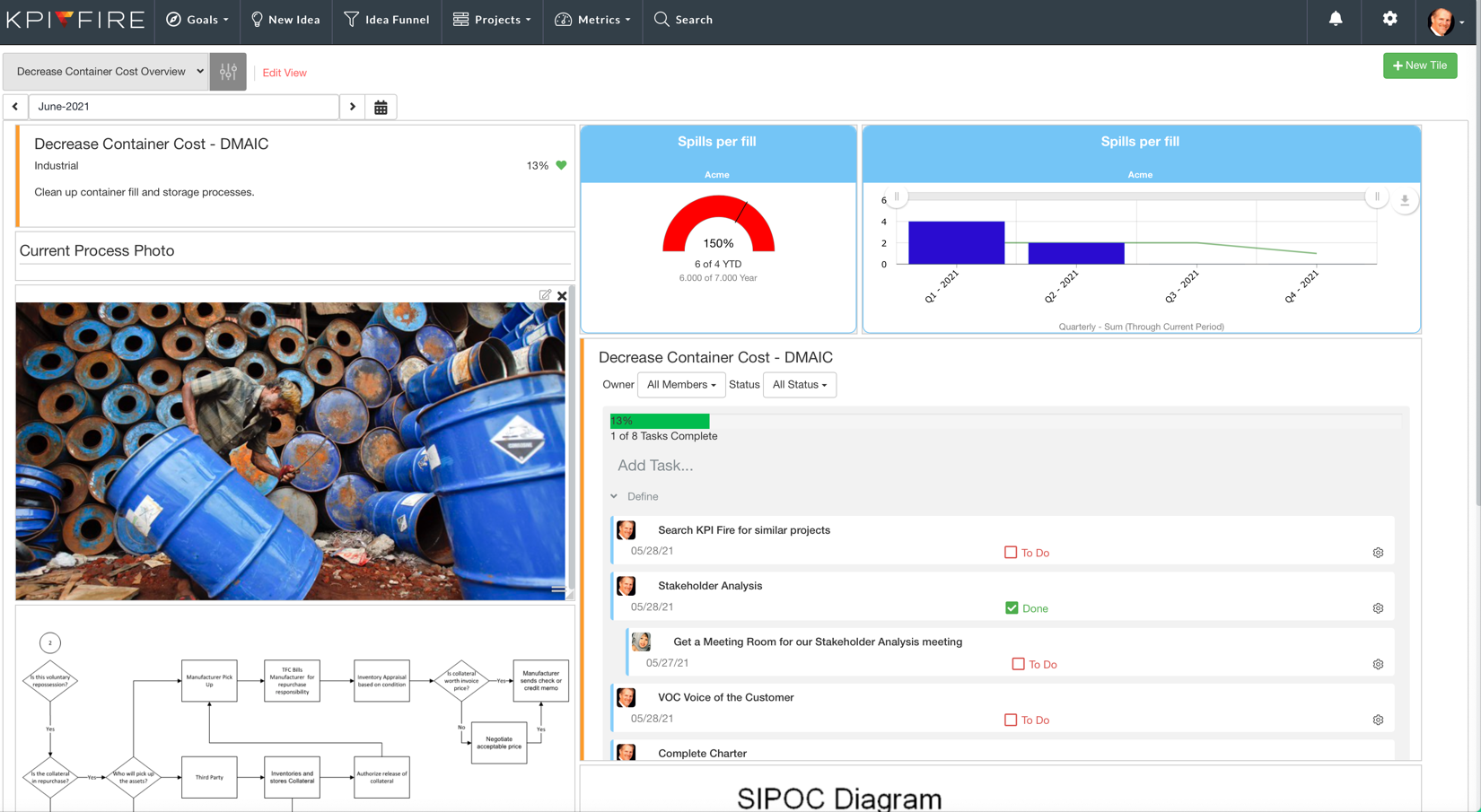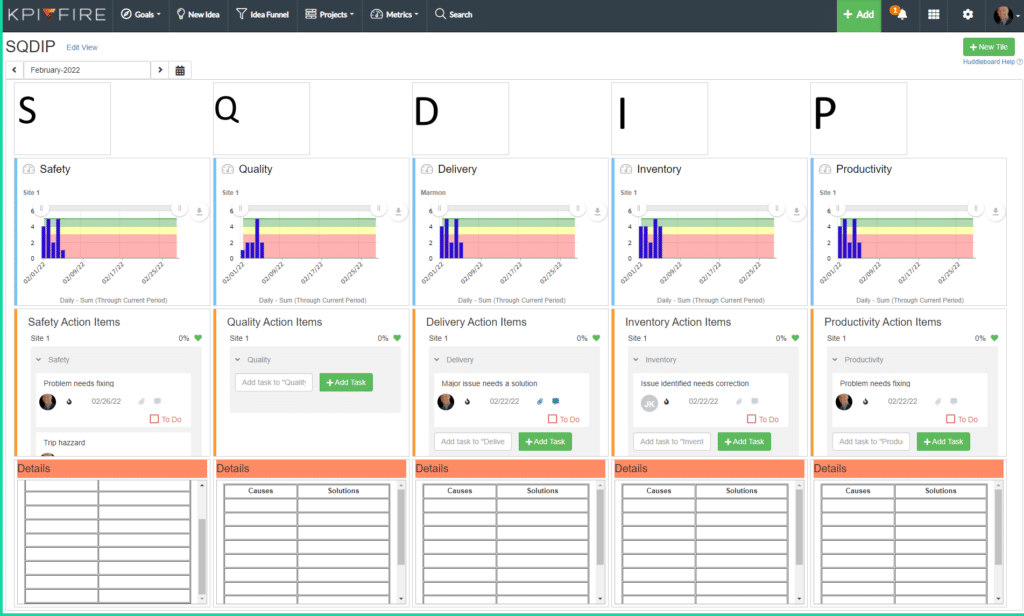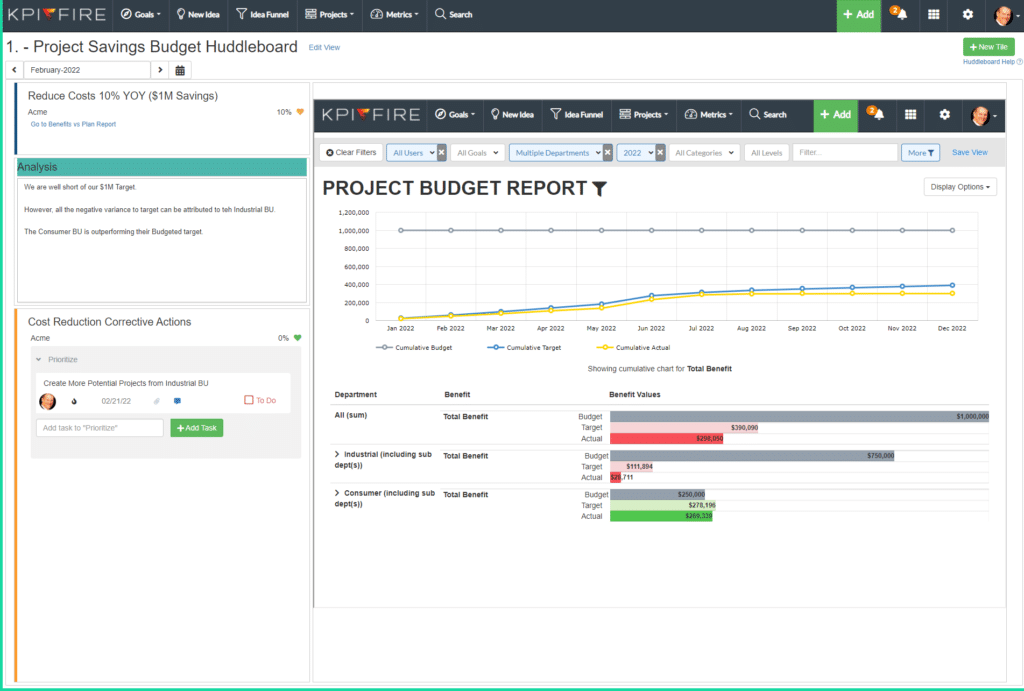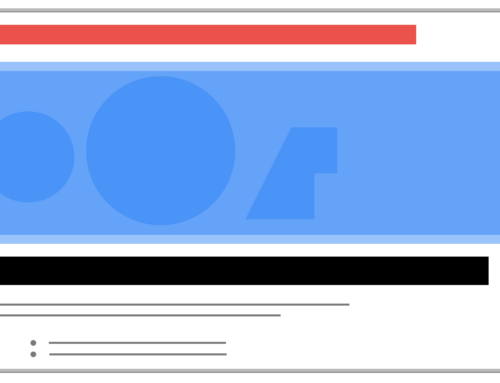Examples of Tier Boards, Huddleboards, Team Boards
A Visual Management system can be a powerful tool to help improve your team communication and performance. We refer to these as Huddleboards, but you may have seen them referred to as Tier Boards, Dashboards, or Whiteboards. Following, are some huddleboard examples.
What should a Huddleboard look like?
What is a Huddleboard?
- A place (physical or virtual) where a team can meet and review priorities and make plans
- A visual representation of the work a team is doing
(see this post titled: What is a Huddleboard )
What are the benefits of a Huddleboard?
- Display and remind team members of priorities and important goals.
- Hold teams accountable for committed work
- Capture issues, and ideas for improvement
- A place to recognize & celebrate successes
Examples of Huddleboards
Example A) Tier 3: Monthly Huddleboard
This is an example of a Tier 3+ board that could be used as part of a Monthly Business Review.
- Frequency: Monthly
- Who would use it: Members of the senior leadership team
- Metrics: Business Outcome Metrics
What is a Tier Board?
The word Tier is used to refer to the level inside of an organization where the work is being done. Large organizations may have many more “Tiers”, but for this example, we will stick with 3 Tiers.
Example B) Tier 2: Weekly Huddleboard Example
- Frequency: Weekly
- Who would use it: Members of a Team supporting a Net Promoter Score initiative
- Metrics: Department/Function or Team Metrics, or temporary metrics related to a specific improvement initiative.
Example C) Tier 3: Monthly Huddleboard Example
- Frequency: Monthly
- Who would use it: Members of the senior leadership team
- Metrics: Business Outcome Metrics
Example D) Tier 2: Weekly Huddleboard Example
- Frequency: Weekly
- Who would use it: Continuous Improvement team managing a 5S effort
- Metrics: 5S Audit metrics
Example E) Tier 1: Huddleboard Example
- Frequency: Monthly
- Who would use it: Members of the operating team responsible for production
- Metrics: Safety, Quality, Delivery, and Costs
Example F) Tier 2: Huddleboard Example
- Frequency: Weekly
- Who would use it: Members of the Team Working on a Project
- Metrics: Specific to this project.
Example G) Tier 2: Huddleboard Example
- Frequency: Weekly
- Who would use it: Members of the Team Working on a Project
- Metrics: Specific to this project.
Example H) Tier 2: HuddleBoard Example
- Frequency: Weekly
- Who would use it: Members of the Team Working on a Project
- Metrics: Specific to this project.
What should be included in a huddle board?
- Visual: Presenting key performance metrics in a visual format can make them easier to understand and interpret. Visualizations such as graphs, charts, or dashboards provide a clear snapshot of performance trends and help identify patterns or anomalies at a glance. Visual representations also facilitate effective communication and make it simpler for stakeholders to grasp the information quickly.
- Contains Key Performance Indicators (KPIs): The review should focus on specific KPIs that are relevant to your business objectives. KPIs are measurable values that indicate how effectively you are achieving your goals. By reviewing these indicators, you gain insights into the performance of your business in relation to the desired outcomes.
- Displays a Target to achieve or Goal for each Key Performance Indicator: It is important to set targets or goals for each KPI you track. These targets serve as benchmarks and provide a clear reference point to assess your performance. Reviewing metrics alongside their corresponding targets allows you to evaluate progress and identify whether you’re on track or need to make adjustments to achieve your desired goals.
- Track Root Cause: When performance misses the target, find out why: If a KPI falls short of the target, it’s crucial to investigate the root cause of the issue. Analyzing the underlying factors that contribute to the performance gap helps you understand what went wrong and why. This information is invaluable for making informed decisions and taking corrective actions to improve performance
- Actions: Ideas, To-dos, Doing, Done: During the metric review process, it’s important to generate actionable insights and develop a plan of action. This involves identifying ideas or potential solutions to address any performance issues, creating a list of actionable tasks or to-dos, implementing those tasks, and tracking progress. By categorizing actions into “Doing” and “Done,” you can monitor the execution of the plan and ensure accountability
- Celebrate successes: Recognizing and celebrating achievements is an essential part of the metric review process. When you reach or exceed your targets, it’s important to acknowledge the efforts and successes of individuals or teams involved. Celebrating successes helps boost morale, motivation, and engagement, reinforcing a positive and goal-oriented culture within the organization.By incorporating these elements into your metric review process, you can foster a data-driven and results-oriented approach, enabling continuous improvement and driving success in your business.
What makes a good huddle board?
- Visual
- Contains Key Performance Indicators
- Displays a Target to achieve or Goal for each Key Performance Indicator
- Track Root Cause: When performance misses the target, find out why.
- Actions: Ideas, To-dos, Doing, Done
- Celebrate successes
